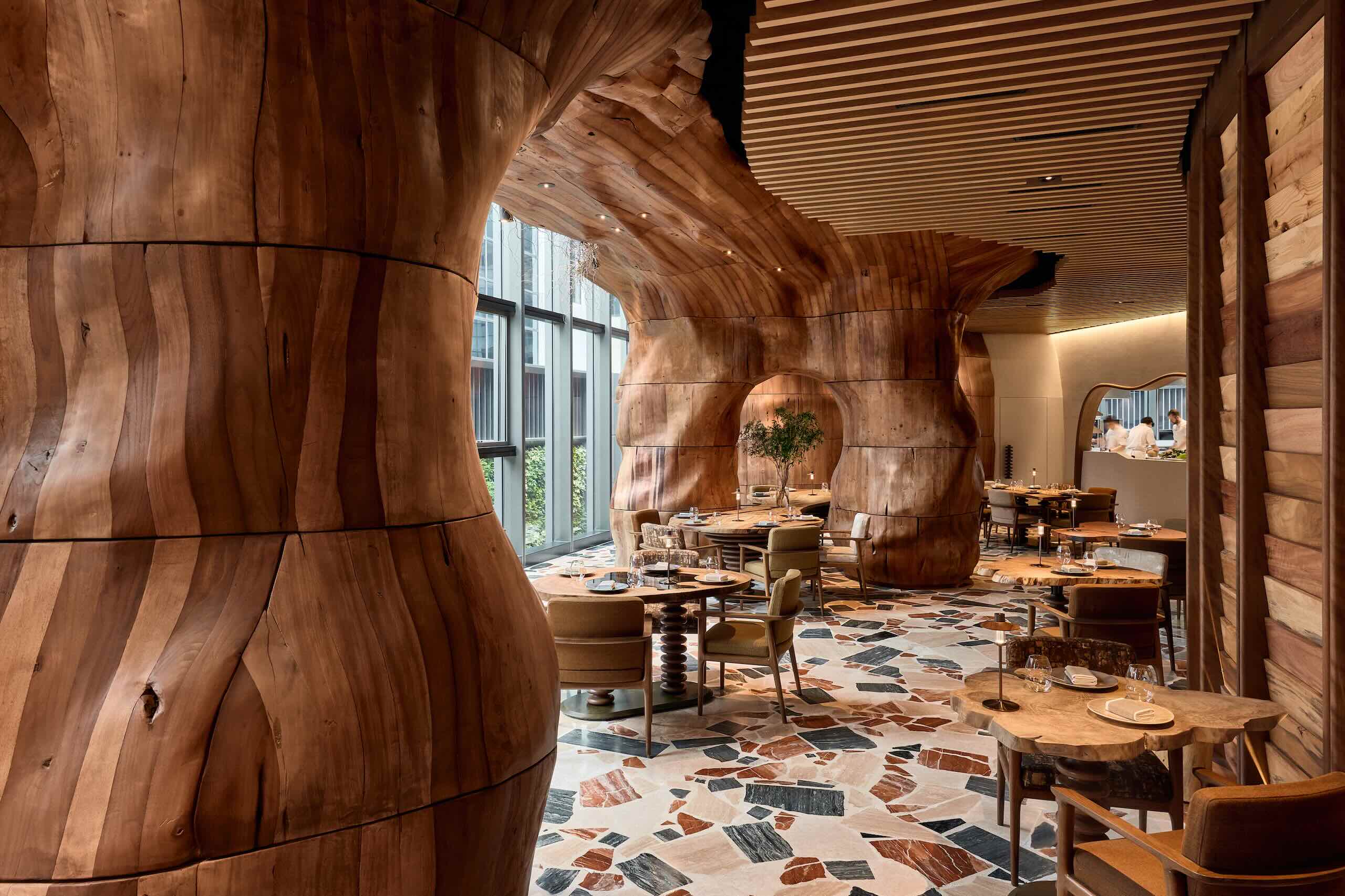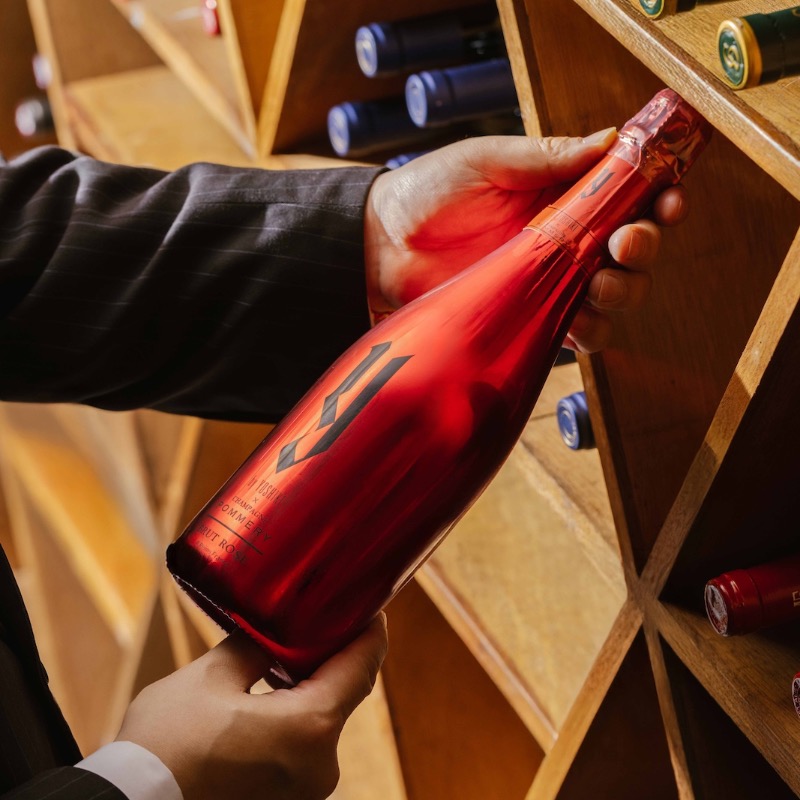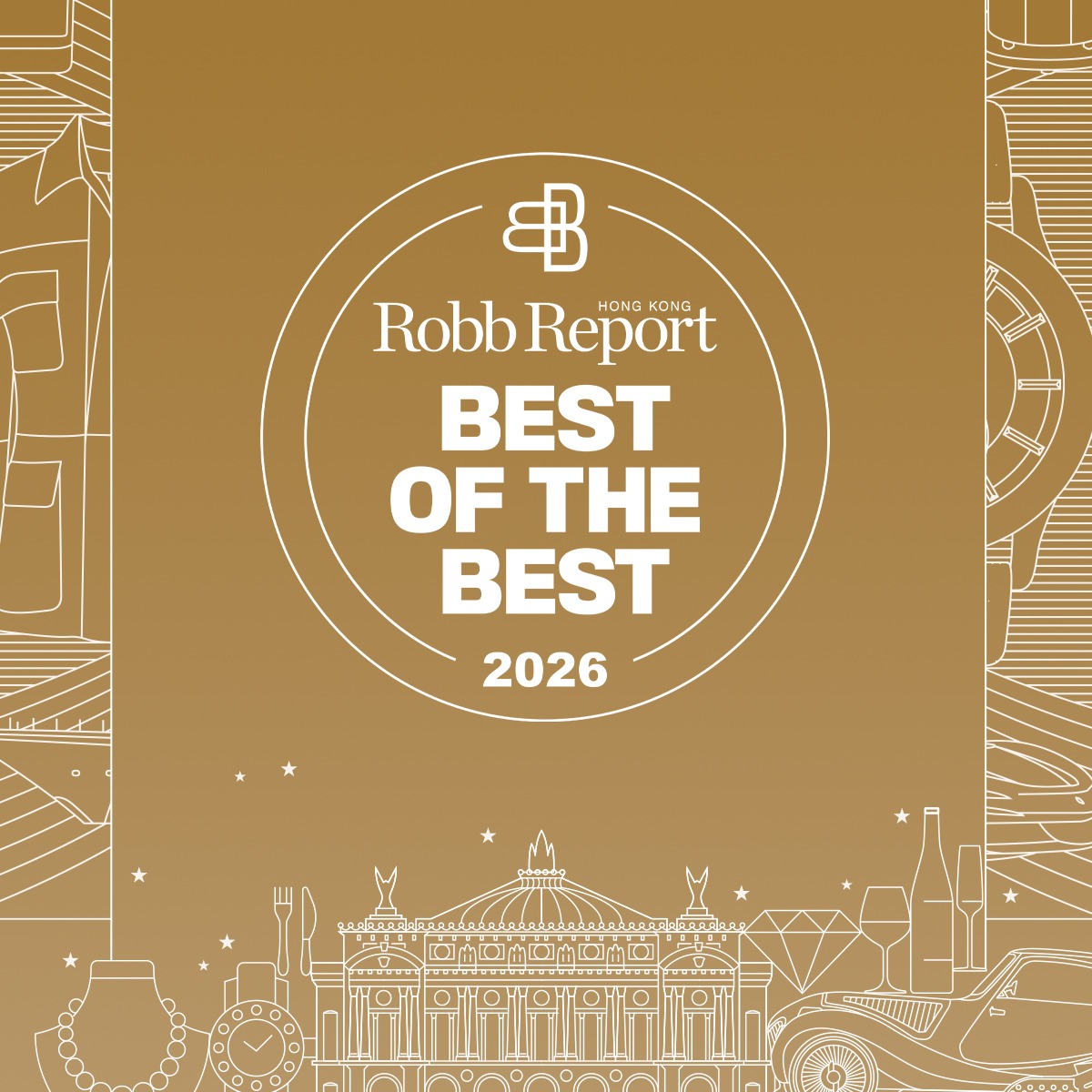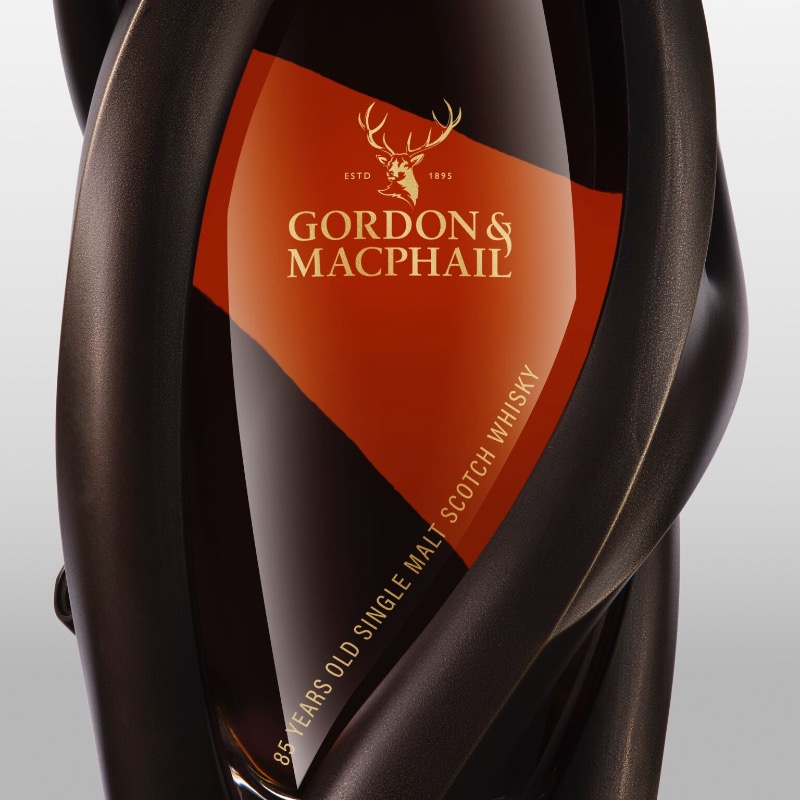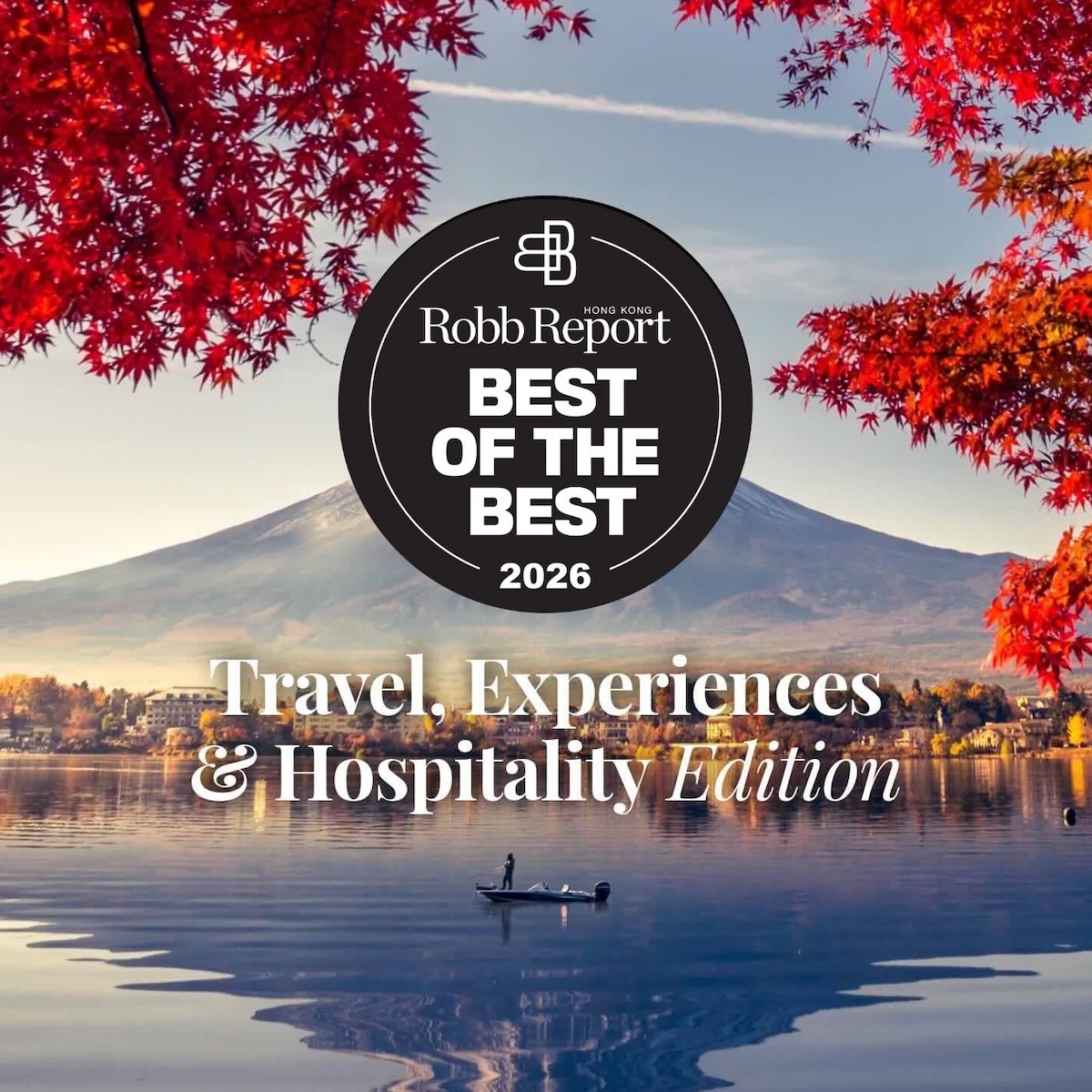After a six-month hiatus and a move to new premises, Roganic has finally returned.
Simon Rogan’s seminal farm-to-fork restaurant, which has delighted diners and critics alike since it launched in Hong Kong in 2019, has reopened its doors at Lee Garden One in Causeway Bay. While the interiors and the menus have benefitted from a revamp, the restaurant’s staunch philosophy towards championing zero-waste-focused dining remains the same, as have the chefs who champion Rogan’s pioneering vision: Oli Marlow, Adam Catterall, and Mark Catchpole, alongside a dynamic team spanning front-of-house and kitchen.
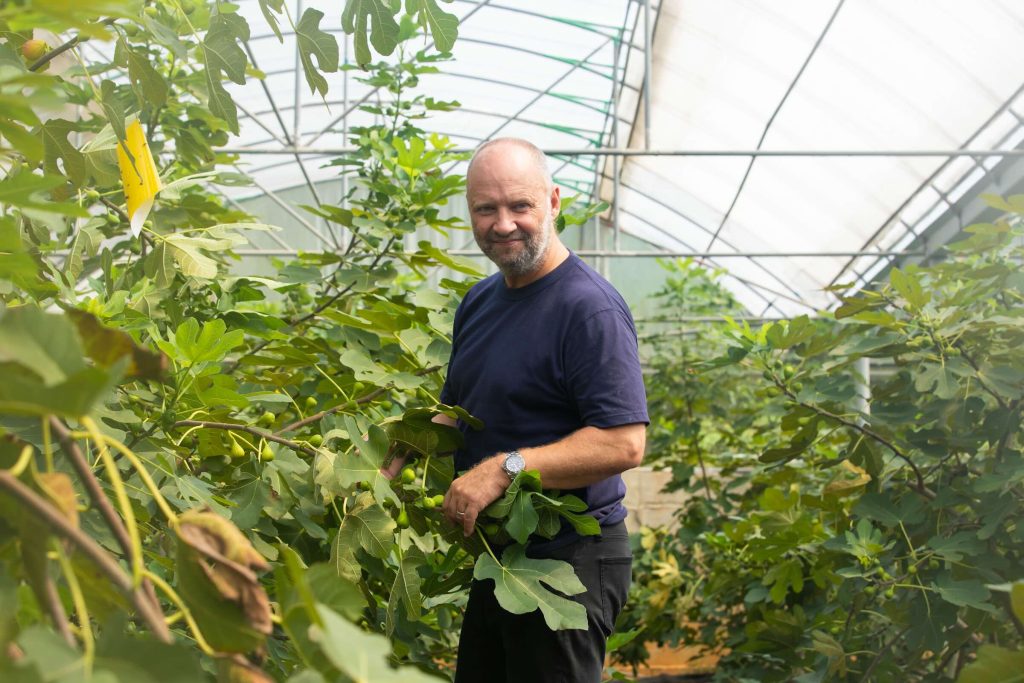
Roganic’s commitment to sustainable gastronomy stays unchanged, but what awaits guests is a whole new experience. Gone is the rigid tasting menu, with a new sharing set format in its place. Diners start with a quartet of amuse-bouche, crafted from ingredient cut-offs from the main courses for an exemplary display of creativity and exploration. Artichoke skins are fashioned into crisp shells, cradling a filling of whey onion, Tunworth cheese, and dots of Périgord black truffle. Prawn heads are emulsified into a dipping sauce for spindly tapioca crackers. Maitake mushrooms are blended with Wagyu ox tongue, pickled shimeji mushrooms, and ramson oil to create a creamy, moreish mousse. Cured mackerel from Hainan is served in a brittle beetroot roll, topped with a hawthorn gel and aromatic dill. From the start, the meal presents a sensory exploration, pushing the limitless possibilities of culinary creativity.
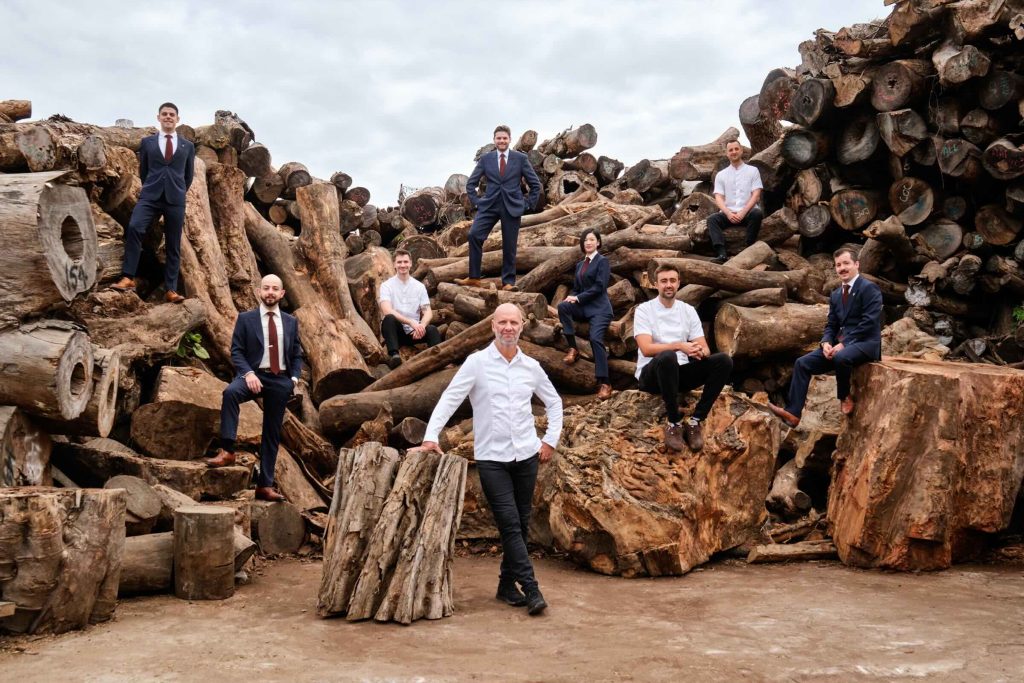
“During the six months of relocating, we learned valuable lessons about adaptability and innovation; the biggest challenge was transitioning to our new sharing-style menu, something we had never attempted before,” Simon Rogan says, crediting the smooth transition to executive chef Oli Marlow and head chef Adam Catterall. Rogan further explains that “this approach reflects a growing preference for dynamic, communal dining, allowing guests to enjoy a variety of dishes that match different preferences and appetites. It also fosters a relaxed, fun atmosphere, giving our staff more opportunities to engage with our guests.”
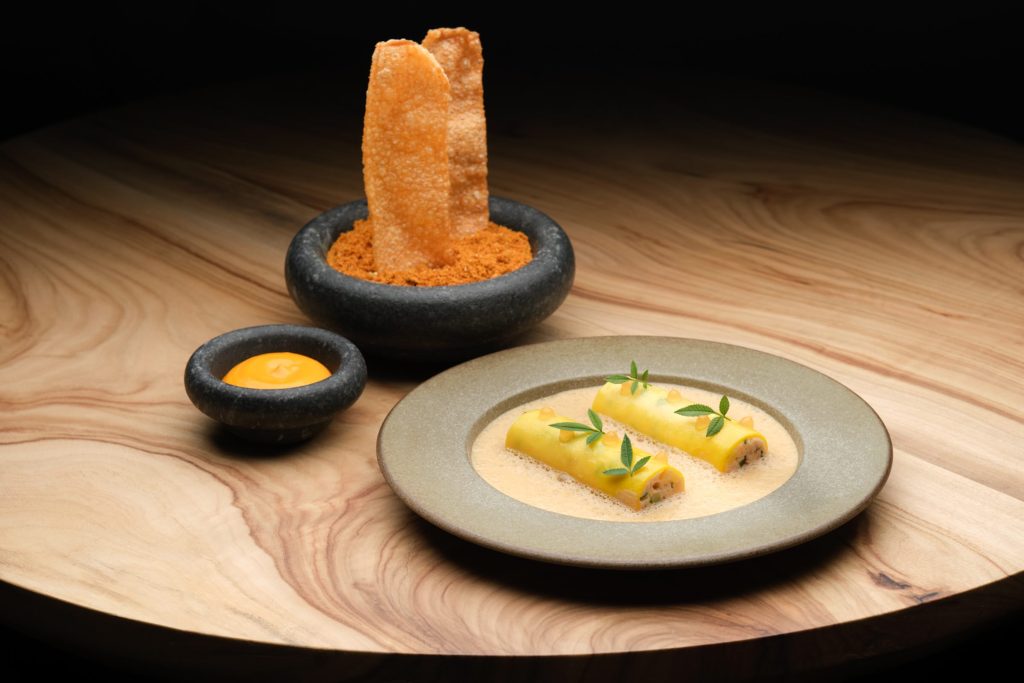
Under the new dining format, main courses are shared, with each guest choosing two of the 10 dishes available. A vegetarian version of the tasting experience is on offer as well. On the menu, the A5 Wagyu sirloin with Tokyo turnips, young leaves, whipped potatoes, and bone marrow stands out, seamlessly complemented by the maitake mushroom in miso butter served atop grains, soft egg yolks, and burnt chive, and the smoked and salt-baked Boltardy beetroot with Yarlington cheese and toasted seeds. Another highlight is the dry-aged Guangdong duck roasted in hundred-flower honey and braised duck leg with pickled walnut mousse, served with kabocha purée and blended prunes. Fully utilising the ingredient, the sauce is made by roasting the bones and trim and infusing the mix with vanilla, lime, and lapsang souchong.

From land to sea, the selection prioritises locally sourced and sustainable ingredients. “We prioritise building strong relationships with local farmers and sourcing local produce,” Rogan affirms. “Aligned with our sustainable and zero-waste vision, our team dedicates time to selecting the best produce from local growers and farmers who share our ethos. Some dishes require days to prepare and are designed to celebrate the ingredients, repurposing trimmings and lesser-known cuts to minimise waste. Currently, 40 to 50 per cent of our ingredients are sourced from local farms, with seasonal variations. About 30 per cent come from nearby areas within a 160-mile radius […] and the remaining 20 per cent is sourced from Europe. We are committed to increasing our use of local produce, but this will take time and continuous effort. While sourcing 100 per cent of our ingredients locally isn’t entirely achievable yet, this remains our ultimate goal. We strive to maximise local sourcing wherever possible.”
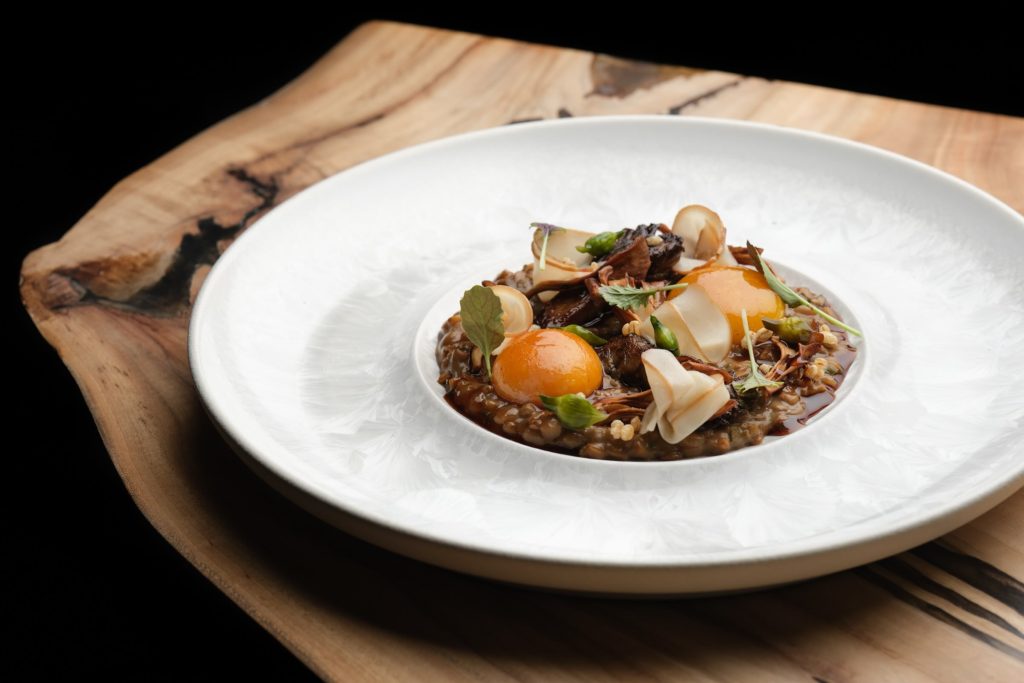
It’s not just the food that receives the zero-waste scrutiny. “Our non-alcoholic programme also creatively utilises remaining produce from the kitchen to craft complementary pairings,” Rogan explains. Priscilla Tam, Roganic’s assistant restaurant manager, collaborates with Catterall and the team to incorporate by-products otherwise wasted into the non-alcoholic beverages. “For instance, we create a lapsang souchong kombucha infused with tomato skins from one of the dishes, complementing the lobster course. [It] offers a smoky flavour with hints of tomatoes, contrasting the richness of the lobster while matching the fruity, floral notes of the rosehip.”
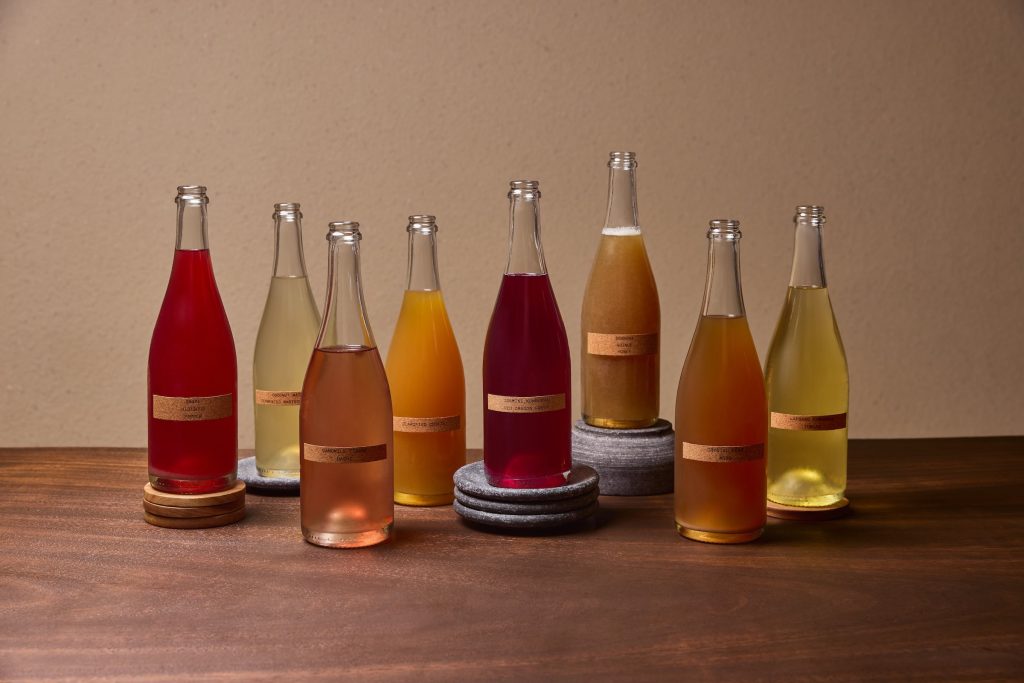
Head group sommelier Valentin Mouillard and Roganic head sommelier Titouan Jounier have curated wine pairings and a wine list that showcases diverse wine styles and grape varieties, highlighting smaller winemakers and little-known labels, as well as renowned producers. Among them, Jounier especially admires an orange wine from celebrated French winemaker Jerome Bretaudeau, recipient of the Winemaker of the Year 2025 award by La Revue du Vin de France. His exceptional and aromatic Pinot gris is made by leaving the skin in contact with the juice for three weeks in concrete tanks, and pairs beautifully with the maitake mushroom.
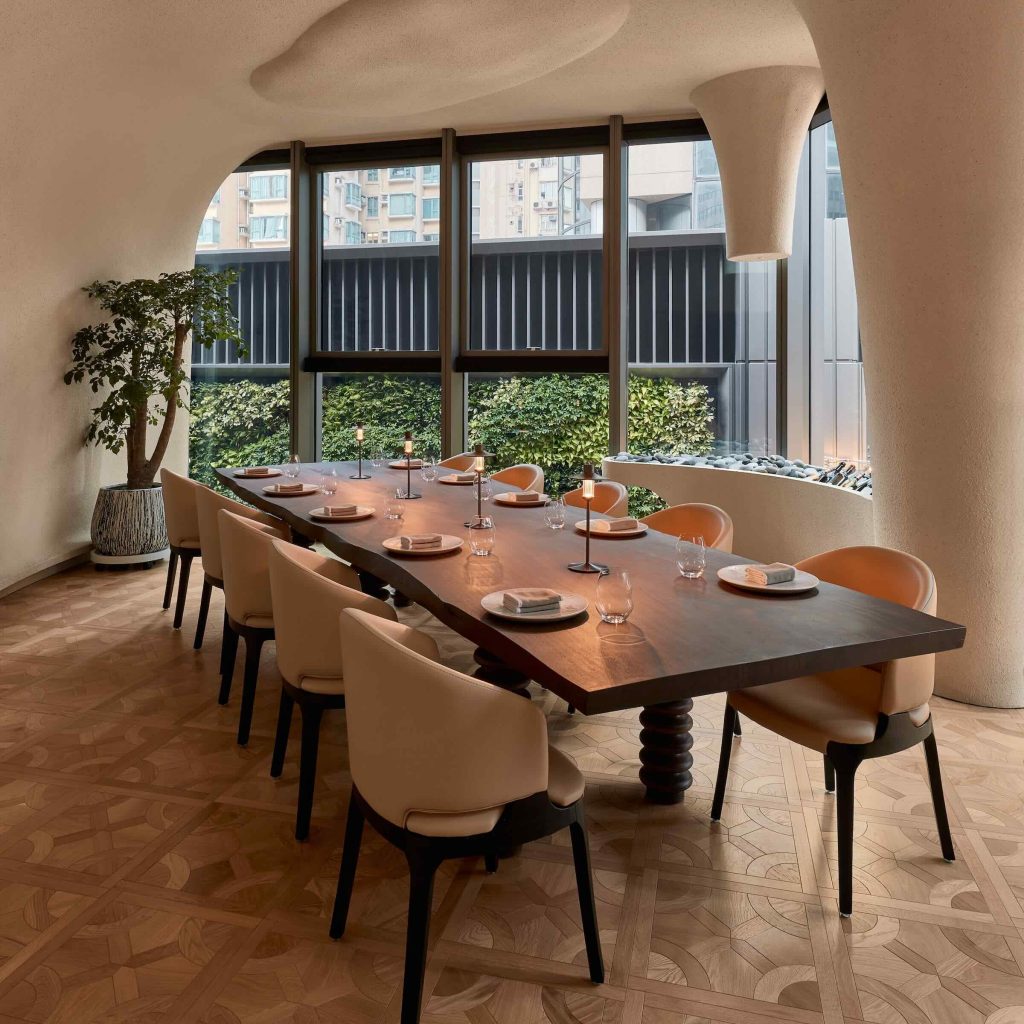
As the first restaurant in Hong Kong to be awarded with a Michelin Green star, Roganic has paved the way for sustainability-focused cuisine to take hold, but in Rogan’s mind, reduce, reuse, and recycle is not only limited to wining and dining. Award-winning Atelier E was tasked with creating interiors that reflect Roganic’s zero-waste objective, and a collaboration with HKTimberbank made it a reality. Rogan explains that incorporating “upcycled wood from locally felled trees affected by typhoons, urban development, or age” keeps them out of the landfill, and that the reclaimed material is “integral to the décor, creating a narrative of resilience and renewal from the entrance to the iconic central tree piece, tables, and VIP room. Each piece has its own unique history.” Local artist Eunis Cheung was invited to add a unique touch to the minimalist bar counter, with stone and oyster shells incorporated into the surface. Meanwhile, the restaurant’s flooring features broken and reshaped marble pieces from Roganic’s former location, and chairs were upholstered with upcycled fabrics for a fresh look and feel.
HKTimberbank founder Ricky Wong adds that “six years ago, Super Typhoon Mangkhut uprooted more than 60,000 trees in Hong Kong. Our mission is to rescue trees from landfills and transform them into beautiful wooden furniture, art pieces, and construction materials. I’m delighted that Roganic shares these values and is giving our wood a second life.”
Certainly, for Roganic 2.0, embarking on that second life means staying true to the restaurant’s mission of sustainability and Rogan’s unshakeable zero-waste vision.
Shop 402–403, 4/F, Lee Garden 1, Causeway Bay, Hong Kong
Tel: (+852) 2817 8383
All images courtesy of Roganic.





